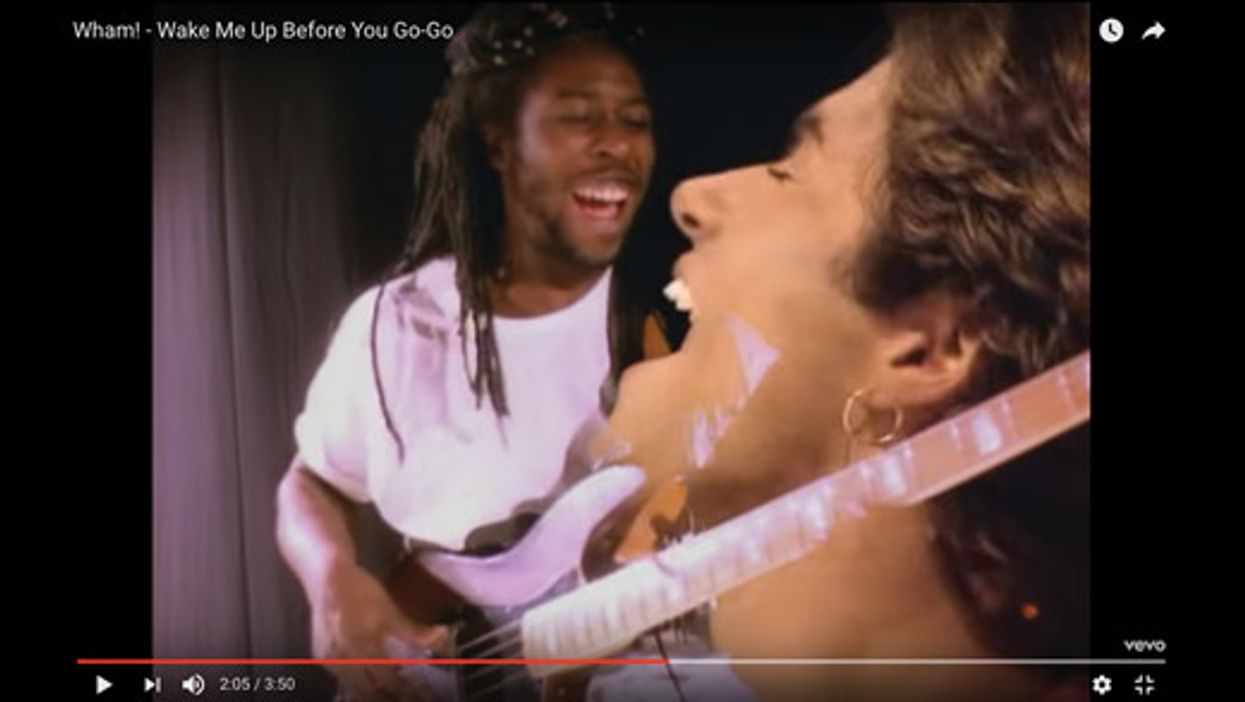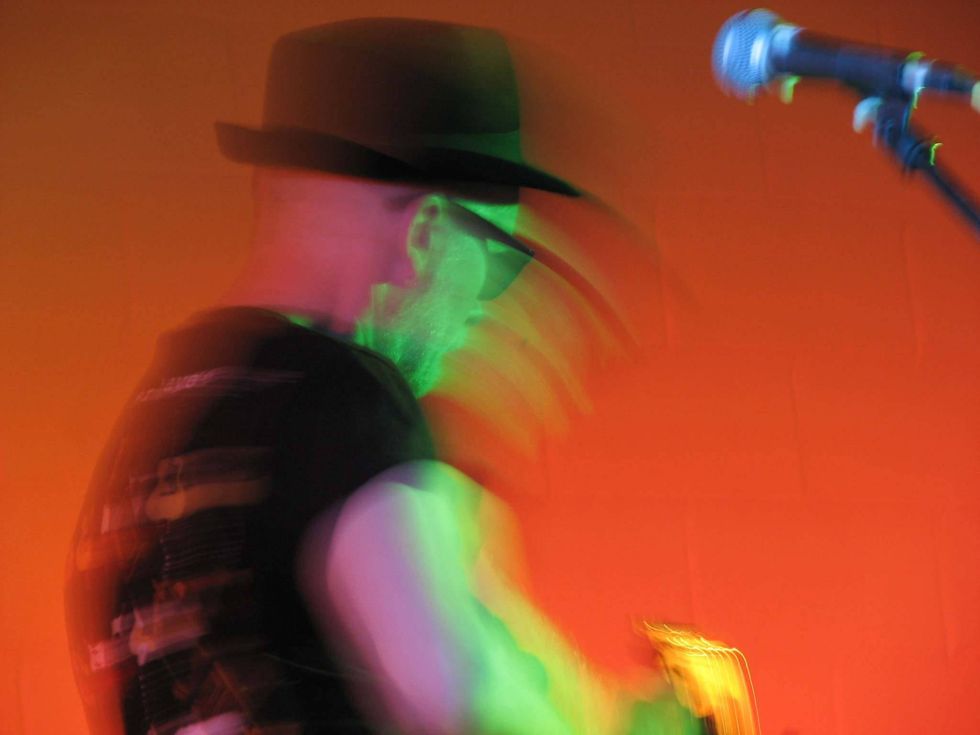Creators and fans of music alike were deeply saddened by the loss of George Michael, a legend in his lifetime who never let genre define his art. Just like Elvis, Ray Charles, Prince, and other giants of years past, Michael made songs in whatever style he damn well pleased, and he made music that was neither white nor black. Even with his songs that weren't overtly funky, there was always a funky undercurrent that still speaks to me.
I'm fortunate in that writing this column has given me several chances to shine a spotlight on bassists who have changed the course of mybass path. This month, however, is a little different. I'll be talking about the work of a player who I recently “discovered" on a deeper level after previously only being familiar with a few of his more famous lines.
Deon Estus isn't the only bassist associated with George Michael, but he was a major creative force and musical right-hand man for Michael for many years. Estus was sometimes referred to as the third member of Wham!, and his bass lines were often hooks on their own—played with intensity and personality, and favored greatly in the final mix.
Given that I've spent significant time in the woodshed the past few weeks to prepare for a 24-song, two-and-a-half-hour George Michael tribute show, I'd like to share some of the gems I found in these tracks for you to check out yourself.
“Wake Me up Before You Go-Go." This song is likely known best among many musicians for its upbeat Motown-style bass line that's built around a major-pentatonic pattern. Estus turns the line around in interesting ways during the verses in order to make it back to beat 1 of the following chord. And some of his turnaround treatments are applicable almost anywhere. The pre-choruses feature a few lightning fast descending runs that bring a gospel flare to the song and take it to an almost opposite place from the more rigid Motown-style verses.
The indulgent fun appears in the post-chorus, where the band lands on the tonic—in this case, C—and Estus unleashes what sounds like improvised goodness. None of these fills are even remotely standard, but they grab the ear of any listener and instantly toughen up the song. The second post-chorus features a quick dominant lick in the high register, and then drops down to the low E in anticipation to walk all the way up to C at the beginning of the solo. I've seen many an intoxicated person play air bass to these licks. That's how contagious they are.
“Bad Boys." This song might get the trophy for containing the ultimate slap-bass tone on a passive J. You can feel the physicality and power of the slap attack come flying through your headphones. The song is anchored by a very even, straight-eighth-note pattern in the intros and verses that I've been using to practice my thumb attack these past few weeks.
And it contrasts beautifully against the chorus pattern's walking slap line from Dm to G. For extra fun when playing along to this song, try nailing the 16th-note low-synth lick starting on G in between the electric-bass phrases. Aggressive disco-funk at its best!
“Everything She Wants" and “Monkey." These two tracks feature some of the gooiest, Moog-y synth-bass goodness I've heard. As with many warm, filter-heavy synth-bass lines, I can get in the ballpark of the sound with an octave pedal and an envelope filter when I don't have the luxury of a keyboard on a gig.
Both songs are funky, slower mid-tempo jams in which the patterns have enough variations to feel singable as independent hooks, but still retain a funky impressionistic feel. Some measures start with three straight quarter-notes, and because of the note values, the groove still maintains a feeling of absolute funkiness throughout both songs. As a result, the synth-bass lines in these two tracks are a perfect study in where to leave space.
“The Edge of Heaven." This is a Pandora's box of bass candy. The fast pace and obvious Motown nod in the general feel and approach put this song into the same vibe category as “Wake Me up Before You Go-Go." The opening minor-pentatonic lick gets doubled with vocals and is an instant earworm.
The chorus has an alternating F to G pattern that is either played with staccato stabs or walked though with a completely legato feel. Switching between the two approaches almost every other measure in the chorus works as a tool to make the entire chorus feel funky and fluid at the same time. This song also has that nice touch of chorus pedal on the bass that was much more common in the '80s than it is today.
As a bassist who played a monumental role in the songs that made George Michael a global superstar, I think Estus deserves big recognition. There is so much joy jumping out of those tracks that emanates from the bass alone. It's what pure fun sounds like.










![Rig Rundown: Russian Circles’ Mike Sullivan [2025]](https://www.premierguitar.com/media-library/youtube.jpg?id=62303631&width=1245&height=700&quality=70&coordinates=0%2C0%2C0%2C0)








